Beginner's Guide to Foraging and Better Harvesting Methods
•Publié le abril 13 2017

Learning to Identify Wild Foods
If you can tell the difference between cabbage and lettuce, you will be able to identify plants and mushrooms in the wild. Foraging can be as simple as picking mulberries in the lane way out back or going for a stroll off the beaten path to locate a patch of Jerusalem artichokes. The more people use wild spaces to explore and forage in, the more their connection to their foods develop.
Many foods are found only in the wild because they are not suited to be grown commercially. This can be because of low yields, because they look ugly or ship poorly, because of the length of time it takes for the plant to grow, and because of a symbiotic relationship between the plant and other forest flora, such as a particular tree species or the type of undergrowth. It is important to remember common wild foods were not being passed over by farmers because of their flavours; often these foods are what the farmers would add to their meals. Many wild foods have flavours that easily integrate into the types of meals we already eat, and they can stand in for other ingredients or enhance dishes.
At the bottom of the page there are a number of resources for a budding forager.
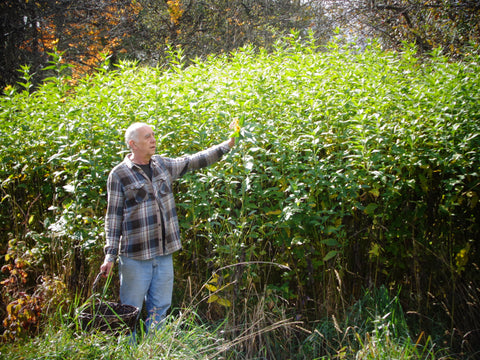
Where to Pick
It is usually best to find private land where you can gain permission to harvest in exchange for a sample of your harvest. Being the sole forager means that you can avoid overlapping harvesting, and you can be confident you are not over-picking an area. Being careful to harvest only between 5 per cent and 10 per cent of a patch of wild leeks each year only works if you are the only people harvesting from that area. Before foraging on public land, check local by-laws and with local conservation groups to find out where you can legally forage. Cities, parks, provinces and states all have different laws around harvesting.
Keep aware of the soil quality and keep upstream or away from agricultural and industrial areas, as the ground surrounding them can often have residual chemical sprays, bacterial pathogens, or heavy metals that will find their way into the food. Before picking waterborne foods and plants that line riverbeds, such as cattails and fiddleheads, make sure that water quality is good. Cooking will not remove many pollutants.
Many cities have storied industrial pasts. In the 1980's, the Don River in Toronto was so polluted with chemicals that it was possible to develop film in its water, and many of those contaminants such as lead and mercury remain in the soil of the riverbed and floodplain. While some things such as nuts may be alright to harvest in small amounts, you want to avoid mushrooms, berries, and vegetables that come from contaminated soils. Some city neighbourhoods will be far safer than others, so learn about the history of the land you are going to pick from and find out about local by-laws.
Look into local foraging meet-ups, events and groups. In Toronto, Not Far From The Tree, the Mycological Society of Toronto, and The Wild Foragers Society organize foraging walks.
For other cities please see the resources section below.
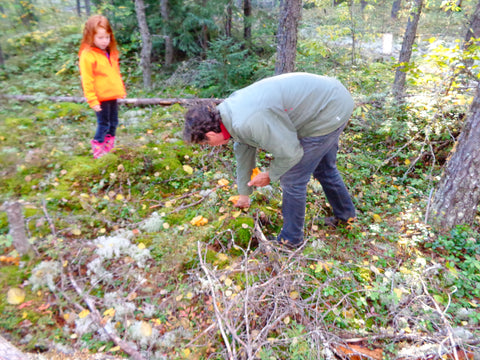
Sustainable and Progressive Harvesting
Sustainable harvesting often gets used as a buzzword, but it's often left unclear just who and what it is sustainable for. Is it sustainable for the plants, the local wildlife, or the people picking? This is not an issue when picking foods that are abundant, but there are many that can be threatened by inadvertent over-picking. There may be a lot of a plant growing in one area, but this doesn't mean that it is abundant everywhere. A better approach is progressive harvesting, which means compensating for what you harvest by giving back to the land, by spreading seeds, removing invasive species and reintroducing natives, all while minimizing your footprint to maintain the health of the ecosystem.
Picking plants, such as wild leeks, should be done in moderation, however when picking most mushrooms it is not a problem to pick lots of what you find, as they are the fruit of a much larger organism that will produce more. It is good to leave a bit behind for birds, deer, slugs and chipmunks to feed on, but if you see a bunch of morels don't feel bad about filling your basket.
It is important to learn when it is best to pick a plant or berry to make the most of your harvests. Many plants such as dandelion will become bitter after they have produced flowers, so it is ideal to pick them just before they bud. Some flowers are best picked at specific times of day, such as early morning when still sweet with nectar.
While it can seem like a lot to remember, if you start out by foraging for one food at a time, you will soon be able get to know a cornucopia of wild edible foods. The more plants and mushrooms you get to know, the deeper your connection with nature and food will become.
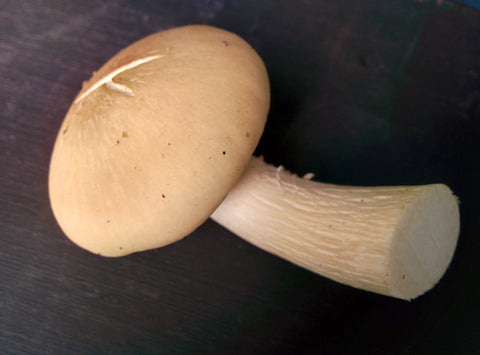
Toxic Lookalikes
Foraging is largely a safe, family-friendly activity that almost anyone can do. There can be hazards, however, and it is important to take precautions. If you're not sure if something is edible, the best precaution is not to pick it. Many plants and mushrooms are easy to identify with confidence. Start with identifying easy plants, such as fiddleheads and morels, or berries, such as raspberries. Learn a few new plants or mushrooms at a time. Be cautious in particular with umbelliferae and nightshades. Even innocent-looking field mushrooms can be troublesome. Umbrella-shaped plants such as the highly poisonous water hemlock and wild parsnip can be mistaken for the edible wild carrot. While mushroom poisonings are extremely rare, the worst cases tend to be caused by white or brown mushrooms that look similar to what you'll find in the store. Far more common than deadly poisonous plants are bitter or unpleasantly flavoured ones. Learn about the anatomy of plants and mushrooms to identify patterns you can use to determine species. If you try something new, make sure to look up lookalikes and their characteristics. Don't take chances with plants you don't know.

Must-Have Tools of the Trade
Bug hat and veil — essential to maintaining sanity in the worst of blackfly or mosquito season.
Trowel — for uprooting tubers, leeks and garlic, or quickly transplanting rhizomes.
Two knives — knives get dirty and get dropped, even by the best of us, so it is good to have a backup. If you are planning to go deep into the bush, a machete can be helpful.
Wicker baskets — these will allow the dirt and spores from your harvest to fall out and are stiff enough to prevent what you pick from becoming badly bruised.
Paper bags — to keep the odd and strange things you find separate for identification at home.
Identification guide — so you can be confident about what you are picking and avoid lookalikes.
Empty yogurt containers — for storing berries to avoid damage.
Blue Ikea bags — great for hauling leafy greens back home.
Trays (see photo above) — allows air to circulate through them, which mushrooms need to stay fresh.
Coolers and ice packs
Basic dehydrator — for herbs, mushrooms, berries, or anything whose flavour intensifies when dry.
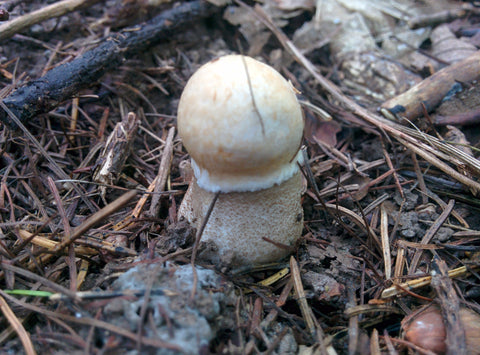
Allergic Reactions and Poisoning
When first trying any new food it is best to test for any reaction before consuming a large amount. Some people will react differently to some mushrooms or plants. Improperly cooked mushrooms and plants such as fiddleheads and morels can cause a variety of temporary gut issues. Make sure you have properly identified the wild food, and always keep back a little of what you plan to cook.
If you think you have eaten something toxic or are having a severe reaction, get medical help right away, and take with you the sample you kept apart from what you cooked. This can help doctors quickly determine the best treatment to get you back on your feet as soon as possible. Remember that the same rules for food safety apply in the wild as they do in your kitchen. Avoid cross contamination and be cautious about how you store the food. Throw out any spoiled food.
Some foods can have reactions with drugs that you may not expect. If you have a heart condition or are pregnant, take care, as some foods can have noticeable effects on the body.
If you get poison ivy or poison oak on you, think of it as an invisible grease that will burn. Get the oil off as soon as possible to avoid 10 days of discomfort. Remove as much as you can with warm water soap and a rag, and throw the rag away afterwards. Then go back and wash again with a fresh rag, making sure to scrub difficult to reach spots. Knowing how to identify and keep away from things like giant hogweed, that can burn skin, can save you lots of trouble. Most of the trouble comes from just a few plants, so learn to identify them. No one has ever been poisoned by simply handling a mushroom. Do not be scared to pick, investigate and learn.
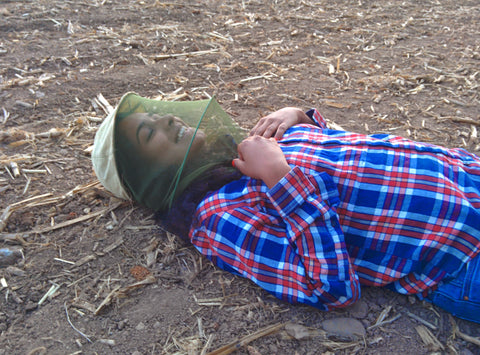
Dress for the Weather and for the Bugs
Blackflies, mosquitoes, ticks, deer flies, and horse flies can be the bane of a forager's existence, so it's best to be prepared. Long sleeves and full-leg pants will keep off most bugs, and tucking your pants into your socks will prevent ticks from working their way onto your legs. Dousing yourself in DEET will ward off most bugs. Catnip is a somewhat effective natural bug repellent, but it's most effective when used alongside something stronger such as DEET. Dressing in breathable layers can help you moderate temperature. Full-finger leather bike gloves are more comfortable than work gloves and are better at protecting your hands from thorns.
Resources
There are a few online resources for people who want more information about how to get into foraging. Use the following groups and forums to discuss recipes, help with identification, and to learn about the medicinal or folk uses of what grows around you.
- In the weeds TV - a foraging documentary series that showcases chefs and foragers with wild edibles from Canada
http://intheweedstv.com/
- An international group that focused on wild foods of all types: mushrooms, berries, meats and more.
https://www.facebook.com/groups/Wild.Foods/
- An international group dedicated to wild edible plants. https://www.facebook.com/groups/ediblewildplants/
- Plant identification and discussion
https://www.facebook.com/groups/623997204362467
- Toronto foraging meet-up group https://www.facebook.com/WildForagersSociety/
- Toronto urban harvesting group that focuses on fruits and nut trees http://notfarfromthetree.org/
- Mycological society of Toronto
https://www.myctor.org/
- Ontario Forest and Fresh water Food association
http://onforestfoods.net/
- Ontario Nature
- Ontario Nature Northern Forest Foraging Guide
- Ontario Nature Harvesting and Processing Edible Wild Plants Guide
- Ontario Nature Edible Wild Plants
- Public Health Ontario Foraged Mushroom Consumption in Ontario
- Mushroom identification
https://www.facebook.com/groups/MushroomIdentification/
http://www.mushroomexpert.com/
- Mushroom recipes
https://www.facebook.com/groups/mycocuisine
- Mushroom growing
https://www.facebook.com/groups/1386696498248239
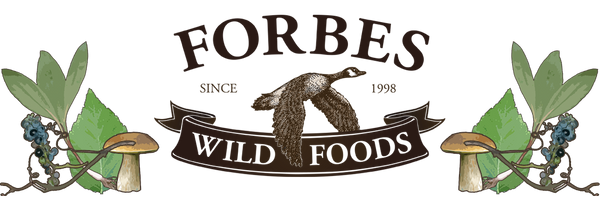



commentaires
1 commentaires
-

Publicado por Casa de Wherever | January 04, 2022
Dejar un comentarioWow Dyson, astonishingly thorough guide – thank you! Here’s a few foraging thoughts and tips for the beginner…
https://youtu.be/bSgyuolxkYE